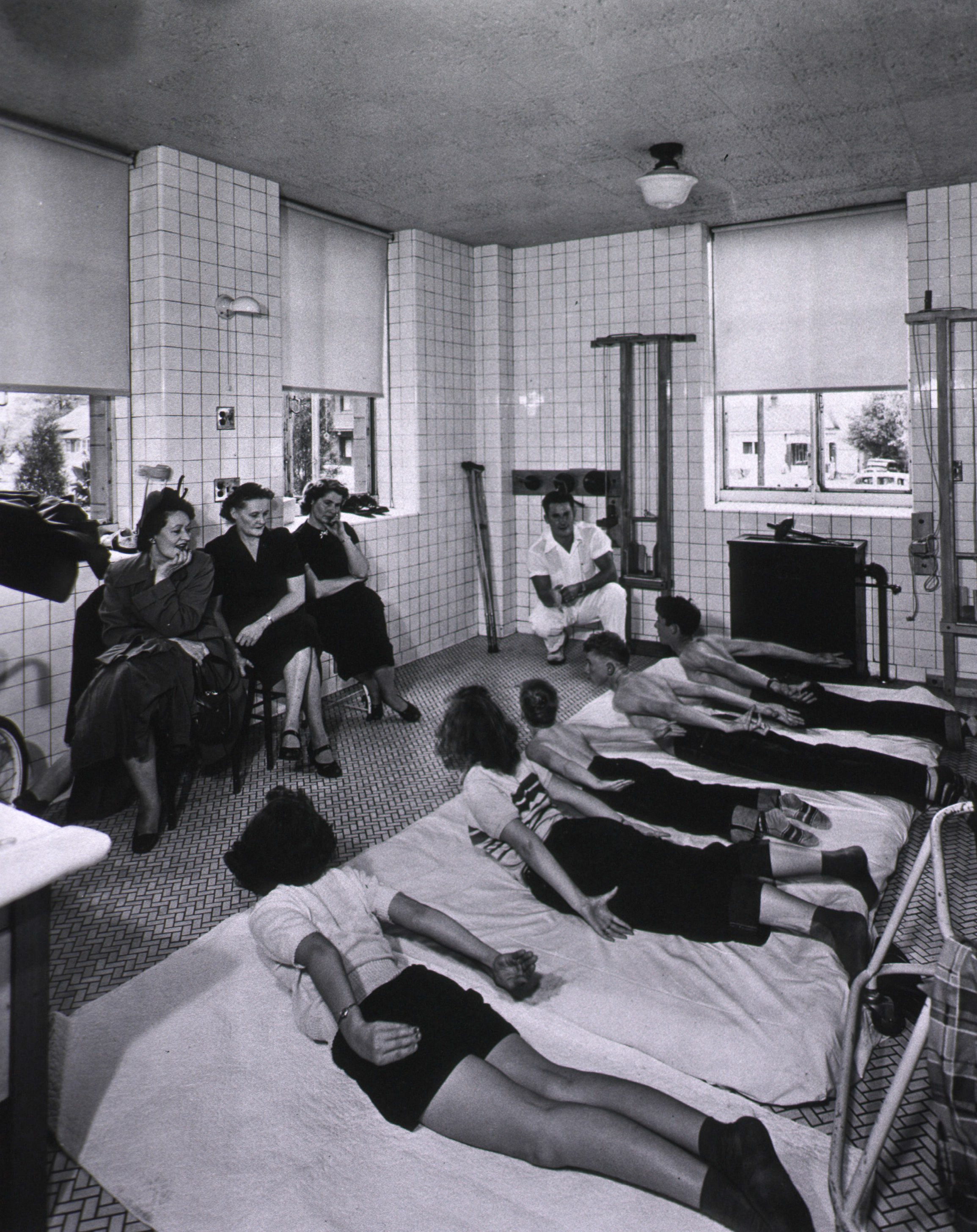Brief History of Polio
Few diseases scared parents in the early 20th century more than polio. It often struck in the warmer summer months, sweeping through cities and towns in epidemics every few years. Poliomyelitis (often just called polio now) is an acute paralytic disease. It’s an enterovirus, transmitted through contact with people, by nasal and oral secretions, and by contact with contaminated feces. Polio virus enters the body through the mouth, multiplying along the way and especially in the digestive tract.
Polio has existed since ancient times and was documented in the written record in the 18th and 19th centuries, causing paralysis and death. There are 3 wild types of polio virus (types 1-3), which are naturally-occurring and non-mutated strains. There were serious outbreaks in Europe and the United States in the early 20th century, compelling scientists to try and find a vaccine. Although polio has no cure, as you will read in this timeline, vaccines have successfully eradicated polio in the western hemisphere since 1994.
A nurse is ready to offer assistance to a young boy with polio struggling to walk with the aid of crutches and leg braces. Shigenori Kameyama was little more than a year old when the polio virus found him in the hamlet of Tskuni on Kyushe Island, some 1,800 kilometers from Tokyo, Japan. He became completely paralyzed. Undaunted, his parents-a humble family of limited means- decided to move to Tokyo where, several years later, Shigenori was admitted to the Seiahi Ryogo En, a hospital, school, and home for crippled children founded in 1937 by Dr. Kenji Takagi, pioneer of rehabilitation work in Japan. There Shigenori began the long battle to regain partial use of his limbs- just one of many Japanese children who have been helped indirectly by WHO and UNICEF by the provision of fellowships for Japanese health personnel to go abroad and study the latest methods of rehabilitation. After two years of patient endeavor by Shigenori and his nurses, he managed to hobble forward a distance of five feet. Photographer Dominique Darbois, World Health Organization (WHO) via National Library of Medicine
A physiotherapist giving directions to convalescent polio patients with mothers watching at the Dr. W.H. Groves Latter-Day Saints Hospital in Salt Lake City, UT in 1949. Intermountain Healthcare via National Library of Medicine
A nurse and two U.S. Army corpsmen attend to a poliomyelitis patient in an iron lung in 1949. National Library of Medicine
replace text
replace text







